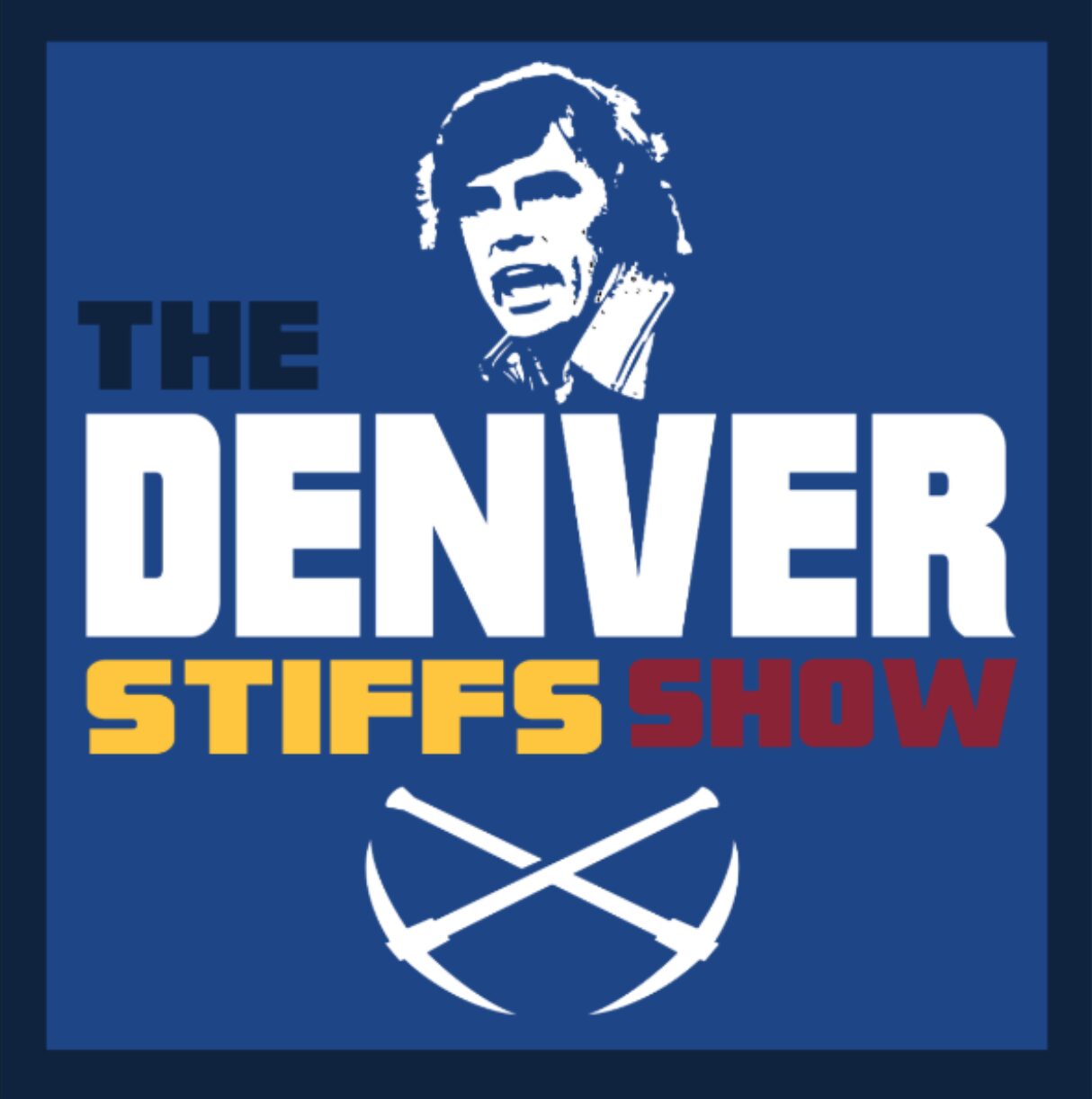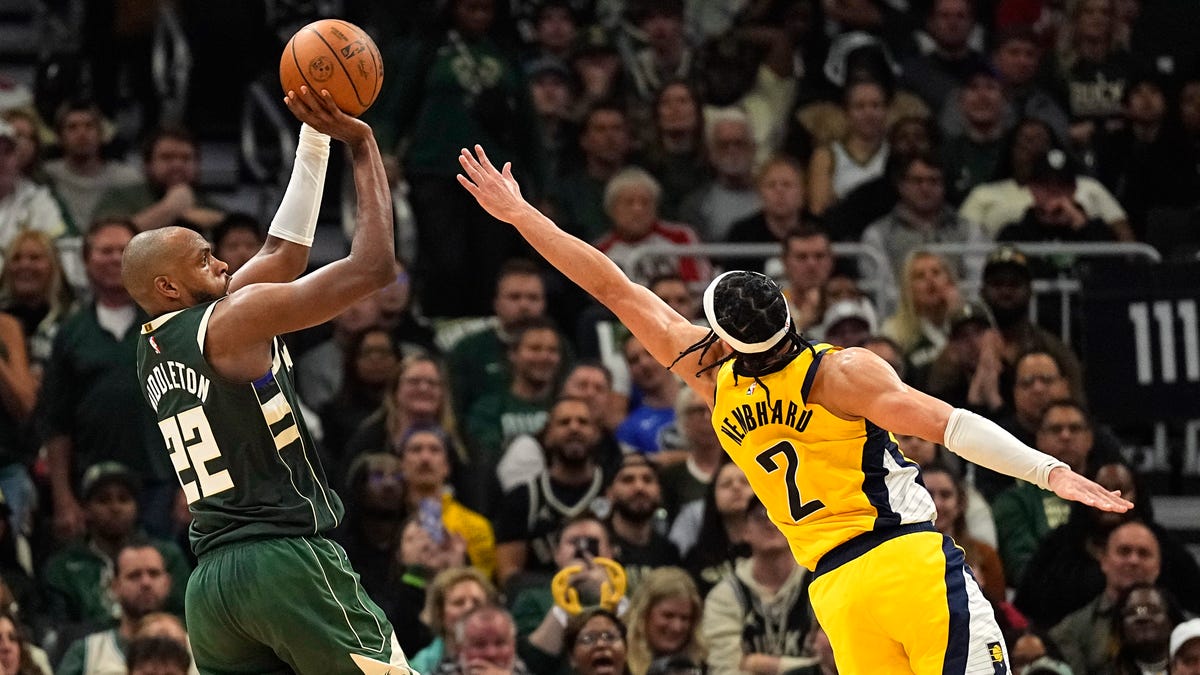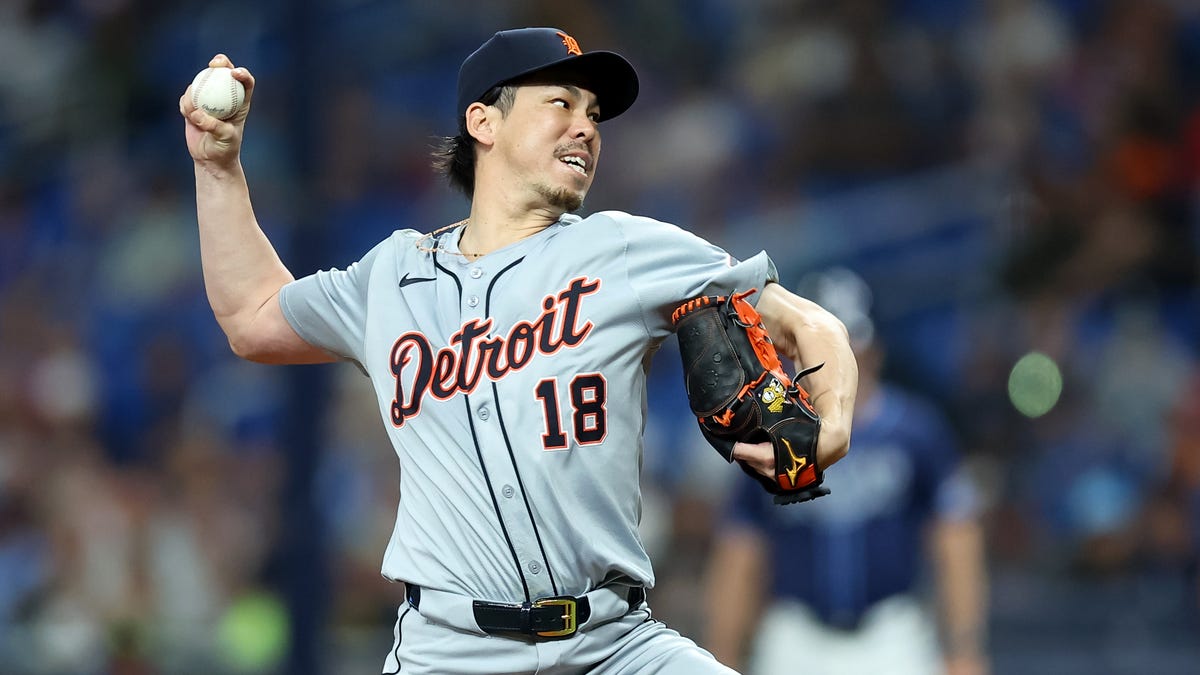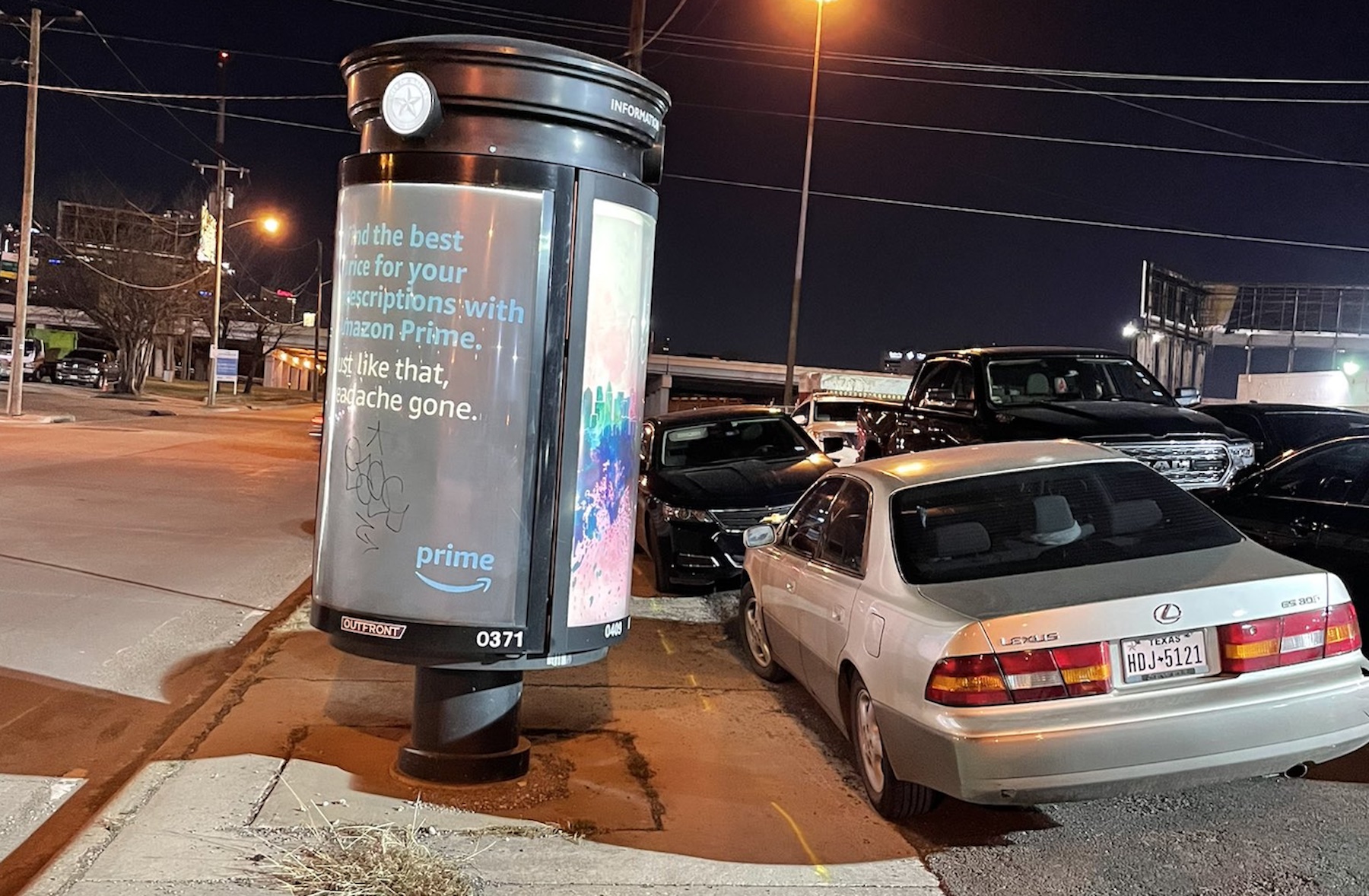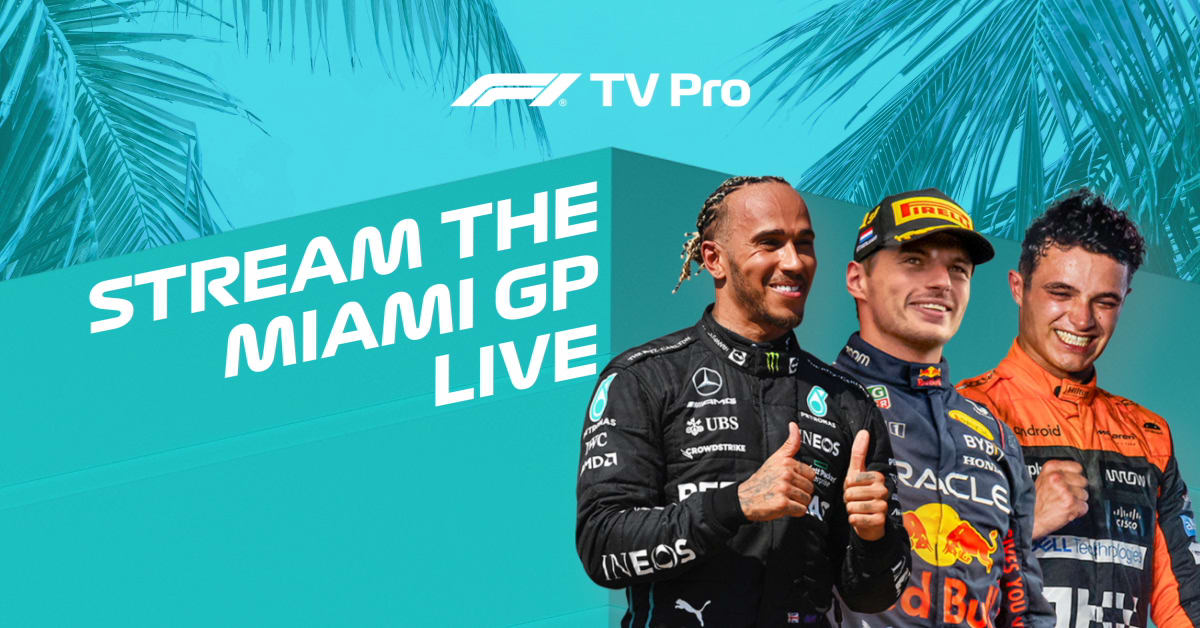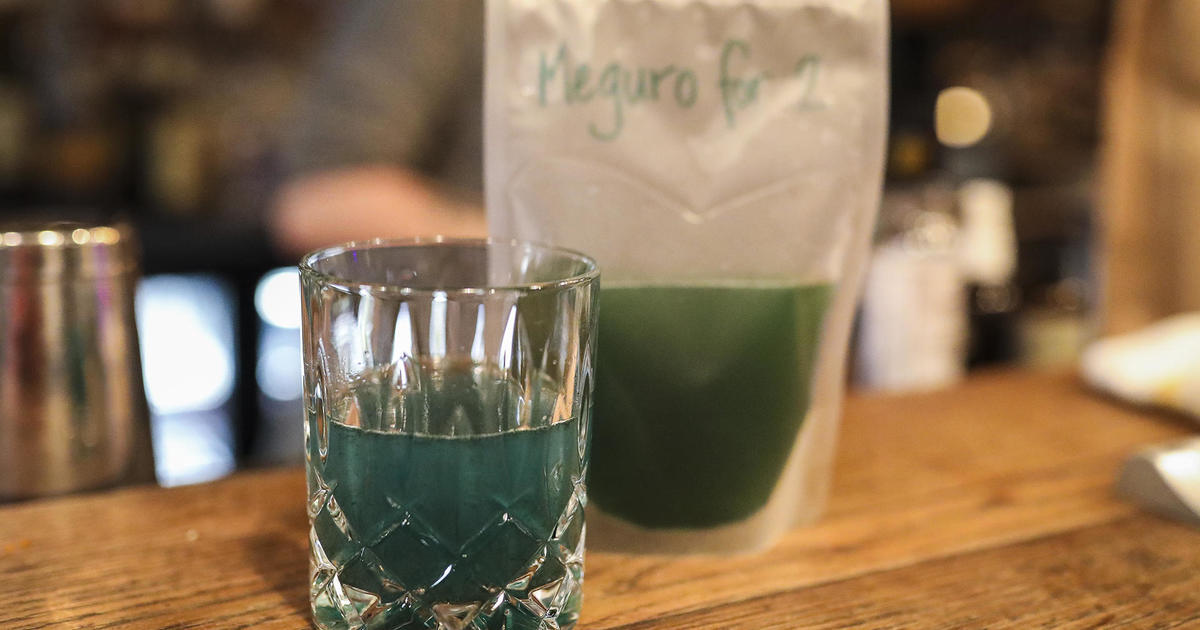Culture
Chris Paul said he isn't retiring, but is there any future with the Warriors?

SACRAMENTO, Calif. — Chris Paul is 11 hours from his 19th NBA season ending. He’s less than a month from turning 39. He takes a seat in the third row of Golden 1 Center after the Golden State Warriors’ morning shootaround in Sacramento. Later that night, the Sacramento Kings blow them out 118-94, an elimination that also throws into question Paul’s immediate future.
But this much is clear: Paul is not retiring. He will play a 20th NBA season somewhere.
“I’ll talk to my wife and my kids, my family, my support system, see what it looks like,” Paul told The Athletic. “But this isn’t (the end of my career). I know it for sure.”
Paul remains under contract for the Warriors next season, but there’s a necessary caveat. All $30 million of his deal is non-guaranteed. Part of the Warriors’ reasoning behind the Jordan Poole for Paul trade last offseason was the financial flexibility it would provide this summer. The Warriors can use it as a trade vehicle or wipe all $30 million off the books before it guarantees on June 28.
Those options and decisions will be explored in the coming weeks. But Joe Lacob and the Warriors’ ownership group have already indicated a desire to avoid the second apron and even duck the luxury tax entirely, resetting the repeater clock. Salary slashing is needed for that goal. Tuesday’s elimination — capping a turbulent 46-win season that finished with the 10th seed and zero playoff home dates — would only seem to accelerate that desire for a financial pullback.
So Paul’s future with the Warriors is as uncertain (and perhaps more unlikely) than any other player who left the locker room late Tuesday night.
“I haven’t thought about it,” Paul said. “I’m too in it. I was in the gym at 8 a.m. this morning, lifting and getting ready for this game. When it’s time for that, Mike (Dunleavy) and Steve (Kerr), we’ll have a conversation and see what it looks like. But I loved it. It’s honestly — this is my fifth year living without my family — I probably saw them more than any other year.”
That’s because of the proximity to Los Angeles, but also because of Kerr’s open culture. Families are welcomed into the interior of the Warriors’ building and around the team more than is typical in the NBA.
“That’s probably what I appreciated the most out of everything is just the communication of letting me know when days are going to be off,” Paul said. “Then your family can fly on the team plane like, I ain’t seen that. I’m grateful to Steve for that.”
When Paul went searching for a temporary place to stay in San Francisco after the trade, his wife helped him find a high-rise. Soon after moving into it, he discovered another notable tenant lived a floor below. He had moved into Draymond Green’s building.
“Luckily it’s nice enough that you can’t hear the person below,” Paul said.
Paul’s inner circle showed varying forms of shock and apprehension after he joined the Warriors, his heated conference rival the previous decade. There’d been so many competitive dust-ups and heated playoff nights between the sides. But Paul embraced it quickly, believing in the shared traits between the sides.
“I didn’t expect it to be bad,” Paul said. “When the trade happened, I was excited, I was energized. It’s been really cool to see all the basketball knowledge, the way different guys approach every day. When people ask about my experience here, I tell them I sort of got a chance to peek behind the curtain.”
The Warriors faced the Utah Jazz at home on a Sunday toward the end of the season. They faced the Lakers on Tuesday in Los Angeles. After the Utah game, Paul, Green and Klay Thompson — who all have homes in L.A. — chartered a plane down a day before the team. Trevor Ariza happened to be in town. Paul told Ariza to hop on their plane.
Ariza was a part of those Houston Rockets teams that the Warriors eliminated in the Western Conference finals twice. He knows how heated the rivalry became between Paul and the Warriors, how much Paul stewed over the losses, and how the Warriors taunted after the wins.
“He was sitting in the plane like, ‘Man, I would have never thought. …’” Paul said. “‘I would’ve never thought we’d all be on here together.’”
Paul and Green didn’t envision it, but they embraced it once it arrived on their doorstep. Literally. Green took the elevator a floor up and went over to Paul’s house on several occasions throughout the season, watching other NBA games, college, NFL — talking basketball schematics, life, family, kids, future.
“I’m thankful and honored, happy as hell I got the opportunity to play with him this year,” Green said. “It’s not something in a million years we ever imagined. Other than winning, it couldn’t have gone better. Built a relationship that’ll go beyond whether he’s here next year or not and whether I’m here next year or not. I haven’t come across many, if any, guys like him.”
Paul and Green built a connection off the court as well. (D. Ross Cameron / USA Today)
Paul also built a relationship with Thompson. Paul accepted a reserve role in the third game of the season, coming off the bench for the first time in his 19-year career, a move that Kerr said sent a message to the rest of the roster about sacrifice. Thompson accepted a bench role in February for the first time in more than a decade. The two then connected a second-unit duo. Kerr tied their minutes together.
Paul told Thompson several times throughout the season that he’d get on his boat for a ride across the San Francisco Bay. They had to cancel once because of bad weather. This past week, before the last game of the regular season, Paul and Moses Moody rode across the water with Thompson to the game.
“Really cool,” Paul said. “It’s always going to be a little choppy when you get to the deep water, but…”
Then Paul went bigger picture.
“I got so many (former teammates) in my career that, like, I have no relationship with,” Paul said. “Don’t really care to or anything like that. Or people who don’t like me or whatever. That don’t keep me up at night. But I’m grateful that I got a chance to be here with these guys. Me and Steph were already connected. Me and Dray definitely, you know, got a real connection now. And somebody I’m grateful that I really got a chance to know is Klay.”
Paul understands the business better than just about any other current player. He knows his contract setup, the Warriors’ tax crunch and will be in on the conversations that dictate his 2024-25 NBA home. Some paths could theoretically bring him back on a cheaper deal. He says he loved his time with the Warriors on a personal level.
But there’s the basketball side that also complicates the equation. Paul isn’t necessarily ready to just accept a lower-usage backup point guard role for the final seasons of his career. He remains of the belief that he can still run a team on a high-minute basis. Paul averaged 26.4 minutes per game this season. He’d been at 32 the last couple of seasons and averaged 34.6 for his career, never dipping below 31. All his counting stats were career-lows.
“I try to do the most with the opportunity that was given,” Paul said. “For me, it’s always been about winning, whatever that looks like. But I know I got a lot more to give to the game. The situation is what it is. But I’ve loved every bit about (this season). I’ve loved every bit of it. Getting a chance to compete with these guys.”
As the Warriors shifted around the rotation repeatedly this season, Paul fit perfectly as Stephen Curry’s backup point guard. They performed better as a team without Curry than they had in several seasons. But Kerr struggled to find usable lineups with both Curry and Paul on the floor because of the size disadvantage, especially with Thompson also out there.
“It’s a difficult situation for him that he handled beautifully,” Kerr said. “He’s always been the starting point guard for his team. But you look at our team and we’re pretty small. Even though he’s one of our best players, if we want to throw our best players out there — and he’s one of them — you start adding up Chris, Steph, Klay, it’s not the ideal roster for him.
“But he was fantastic for us because he became our backup point guard. As I’ve said many times, our non-Steph minutes were the best they’ve ever been because of Chris’ leadership.”
Not the ideal roster for him. That’s the subsection of that Kerr quote that probably hits the hardest. Paul, on a reasonable deal, still makes plenty of sense for the Warriors as a backup point guard to stabilize them with Curry out. But he still desires more and his on-court impact and production and market could justify that, making a reunion unlikely.
“You saw tonight, (the Kings’) size and physicality overwhelmed us,” Kerr said. “When you look at the combinations that we have out there, it usually kind of separates Steph and Chris and Klay. So there’s not as many minutes as Chris would like.
“But the way he handled it this season was incredible. He’s so professional. Such a great mentor for the younger guys. One of the great pros I’ve ever been around. I love coaching Chris and I really hope we bring him back.”
(Top photo: Sean M. Haffey / NBAE via Getty Images)

Culture
What happened to Deion Sanders' Colorado castoffs? Revisiting a record-setting exodus

Chase Sowell walked into Colorado’s football facility on the Sunday after the 2023 spring game and saw more than a dozen teammates lined up against a wall.
As each player entered the head coach’s office and emerged within minutes enraged or in tears, the second-year receiver nervously pondered his fate.
“We knew it was going to happen, but we didn’t know it was going to happen that soon,” Sowell said.
Deion Sanders, given his Power 5 head coaching shot in December 2022 after three successful years at Jackson State, had promised to clean house. He vowed talented transfers were on the way to replace anyone unprepared to play for him. And less than 24 hours after the Buffaloes’ ballyhooed ESPN-televised spring showcase, Sanders informed 20 scholarship players they were moving on.
“He didn’t sugarcoat it,” Sowell said. “He was telling me, ‘You’re coming off injury. I don’t think you will be one of the guys we need to start this year. We need guys that are going to be ready to play now.’”
Sanders didn’t need to use the word “cut.” Sowell understood it was time to pack his bags, enter the transfer portal and find a new home.
First-year coaches running off underperforming players are commonplace in college football. Dumping 20 in one day is not. By the end of the spring, 53 scholarship players transferred out of the program.
Colorado’s extreme roster makeover, unprecedented in modern college football history, yielded 87 newcomers and far more fascination about what Sanders could bring to Boulder. The Buffaloes were a downright phenomenon when they stunned TCU and started 3-0. They backslid hard, losing eight of nine Pac-12 games. Win or lose, Sanders got everyone watching – including his former players.
Where did they go?
Colorado’s castoffs went off on new journeys across college football. Fifteen matriculated to Power 5 programs. Twenty-two ended up on Group of 5 rosters, 11 went FCS or Division II, and two attended junior colleges. Three ex-Buffs went unsigned out of the portal and haven’t played since. And several had to fight the NCAA for the opportunity to keep playing.

Quarterback Owen McCown arrived at Colorado in 2022 with a freshman class desperate to turn around a program that had eight losing seasons over the past decade. The son of Minnesota Vikings assistant Josh McCown started three games as a freshman during the brutal 2022 season. Coach Karl Dorrell was fired after an 0-5 start. The Buffs got blown out almost weekly.
“Going through that rough season made us all close,” McCown said of his class. “And then, obviously, it all went away.”
Sanders walked into his first Colorado team meeting on Dec. 4, Tupac’s “All Eyez on Me” on the speakers, and delivered his first warning.
“I’m coming to restore, to replace, to re-energize some of y’all that are salvageable,” Sanders said. “I’m not going to lie. Everybody that’s sitting their butt in a seat ain’t going to have a seat when we get back.”
Sowell, a redshirt freshman from Houston, was unfazed.
“I don’t think he was being a d— about it,” Sowell said. “I think he was just being straight up: Prove to me that you can play.”
McCown skipped the team meeting. He was the third Colorado player to enter the transfer portal, going to UTSA, where he could start this fall. Sowell stayed to battle it out, but after season-ending surgery for a torn labrum, it was a tough time to be at his best. He was cleared to practice a week into spring ball.
Every day felt like a tryout. Sowell thought he had to be perfect to gain approval. He wasn’t himself. More stressed, more withdrawn. New coaching staffs can be disorienting for players, because they don’t know whom to trust. Sowell’s father grew up in Florida and revered Sanders, and Sowell didn’t want to disappoint his family by failing.
There was nowhere to hide. Cameras followed the team around constantly for Sanders’ Amazon documentary series and his son’s Well Off Media YouTube channel.
“It kinda felt like a reality TV show,” Sowell said.
It didn’t take long for returning Colorado players to figure out the narrative. Quarterback Shedeur Sanders, wide receiver/cornerback Travis Hunter and 19 more transfers were brought in for spring practice. They were the stars of the show.
“We felt like it was us vs. them instead of all of us together,” Sowell said. “That’s the best way I can put it. The new guys were going against the players that had already been there. It wasn’t a good environment to be in. It wasn’t a team environment.”
His freshman class was an inseparable group. The players lived on campus together, dined together and played pickup basketball together. They would return to the dorms at night that spring and talk openly about their predicament: What do we do?
On the morning of April 23, their group text blew up. Players were called into exit meetings with Sanders and told they couldn’t play at CU. One described the experience as going to see the Grim Reaper. Sowell’s meeting was his first one-on-one conversation with the head coach.
The following morning, Sowell said, players were locked out of Colorado’s football facility. They couldn’t grab their things from the locker room. They couldn’t grab a meal at the training table.
“When you’re gone, you’re gone,” Sowell said.
Sowell wanted to go where he could play as many snaps as possible. He picked ECU. It was a big move across the country for a Texas kid who knew hardly anything about the school. But he connected with receivers coach Dyrell Roberts and felt welcomed in his first team meeting with the Pirates.
They needed him, too. Sowell emerged as ECU’s No. 1 wide receiver, leading the team with 47 receptions for 622 yards and a touchdown.
Sowell says he’s happier than ever. His mom says he’s back to being his “true self” at ECU. A year later, he remains in touch with his freshman class in the group text.
Jordyn Tyson picked Arizona State. Dylan Dixson chose Missouri State. Grant Page and Simeon Harris are at Utah State. Anthony Hankerson and Van Wells left Colorado this offseason and are now at Oregon State.
Not one member of their 31-man signing class is still playing for Colorado.

Xavier Smith’s sitdown with Sanders was later Sunday. By then, the redshirt freshman safety knew what to expect. His father encouraged him to hope for the best. But he didn’t even get a one-on-one. Defensive coordinator Charles Kelly brought Smith and safety Oakie Salave’a into the office together.
“We sat on the sofa, and he’s talking to us, but he’s not even looking at us,” Smith said. “I’m looking Coach Kelly dead in his eyes. (Sanders) said he felt like I should hit the portal. He didn’t want me to waste a year thinking I could earn a spot.
“I was actually getting mad, like tears coming to my eyes. Because, bro, you never even tried to get to know me.”
Smith wasn’t shocked he was cut, given his injury history. He’d broken his right leg during his senior season in high school and again in the spring while rehabbing. He played in one game in 2022 but missed the rest of the season with a hamstring injury. Now Smith was finally healthy and, as a young defensive back from Atlanta, eager to learn from his Hall of Fame coach.
Smith assumed Sanders would dump older players and embrace the young talent he inherited. During the team meeting, he told himself: He’s not talking about me. I ain’t leaving.
During the spring, Smith felt more like an extra in the background of the reality show. He tried to make the most of second-team reps and made plays in the spring game but struggled to get Sanders’ attention. So as he sat on that couch and listened to Kelly encourage him to leave, sure, there was frustration.
“He was destroying guys’ confidence and belief in themselves,” Smith said. “The way he did it, it could’ve been done with a little more compassion.”
For Smith and many of the inexperienced players cut by Colorado, the spring transfer window was unnerving. Schools have limited scholarships available entering the summer, and it’s tougher to earn offers with limited game and practice tape. Among the 30 scholarship players who left the program after the spring game, 20 continued playing at the FBS level but only nine joined Power 5 programs.
Smith regained his confidence at Austin Peay. The FCS program in Clarksville, Tenn., provided an opportunity to play right away, and coach Scottie Walden won him over with his relentless enthusiasm. Smith caught up quickly to earn a starting role and Freshman All-America recognition on a 9-3 team that won its conference.
At the end of the season, Walden landed the head job at UTEP. Smith re-entered the transfer portal and followed him to El Paso.
“It’s rare you meet a head coach who genuinely wants to see every player on his roster succeed,” Smith said.

Jake Wiley did not get cut. But he wasn’t looking to stay.
The offensive tackle from Aurora, Colo., spent four years with the Buffaloes and saw it all. He committed to Mike MacIntyre in 2018, redshirted during Mel Tucker’s lone season, became a two-year starter under Dorrell and had five different offensive line coaches.
“That’s not a normal number,” Wiley said.
He stayed for the spring to finish his degree and to see if he fit with the new staff. On cut day, Wiley received an ominous text.
“In our O-line group chat, one of the offensive line coaches texted the group and said, ‘Good luck fellas,’” Wiley said, “and then he just removed all of them. It said these five people were removed from the chat. We were like, ‘Huh? What happened?’”
Two days after they entered the portal, Wiley joined them. He said players who survived the cut still felt unwanted and expendable. He was one of seven returning starters who departed that spring along with running back Deion Smith (BYU), receiver Montana Lemonious-Craig (Arizona), defensive linemen Jalen Sami (Michigan State) and Na’im Rodman (Washington State), cornerback Nikko Reed (Oregon) and safety Tyrin Taylor (Memphis).
“Let me tell you this, because this is something you may not know,” Sanders said last November on “The Dan Patrick Show.” “Maybe 20 kids we may have sat down with and said, ‘We may head in a different direction; I don’t know if this is gonna work out.’ Everybody else quit. They quit. You can’t hold me responsible.”
Wiley was overwhelmed by the number of calls he received upon entering the portal and narrowed his list to UCLA, Duke and Purdue. He flew to Los Angeles to watch a spring practice and was told the Bruins needed a tackle. Wiley loved the campus and liked staying in the Pac-12. It was an easy decision.
He didn’t learn he was moving to guard until the day before preseason camp. That’s a lot of new technique to learn in addition to a new offensive scheme. Wiley rotated in at right guard in UCLA’s first four games but then saw his playing time drop off considerably.
For many of his fellow ex-Buffs, this was a common issue. Among the 37 transfers who departed after Sanders was hired and landed at FBS schools, 23 did not start a game last season. Three former teammates – running back Jayle Stacks, receiver Maurice Bell and cornerback Nigel Bethel Jr. – went unsigned and didn’t play last season. Bell is now a trainer and working in real estate back home in California.
Going from playing to watching wasn’t fun, and Wiley admits he might’ve handled the letdown poorly if he were younger. He tried to respond with maturity.
“I wasn’t going to be that guy that was really complaining a lot or pouting and being negative,” he said. “If I wasn’t going to play, I wasn’t going to sit there and be a drain on the team.”
Wiley re-entered the portal in late November and relocated to Houston, where he’s once again playing tackle and helping a new coaching staff set a standard.
Wiley says he’ll always be a Colorado alum and fan, and he couldn’t help but marvel at the spectacle Sanders created.
“I never would’ve ever thought that Lil Wayne would be running the CU Buffs out of the tunnel,” Wiley said.

While his new Miami (Ohio) teammates enjoyed a day at Universal Studios in Orlando, Fla., Maddox Kopp testified via Zoom in a U.S. District Court hearing in West Virginia.
At the conclusion of the Dec. 13 hearing, District Judge John P. Bailey issued a 14-day temporary restraining order against the NCAA, granting immediate eligibility to college athletes who’ve transferred multiple times. The TRO halted the organization’s attempts to enforce a one-time transfer rule. And it was a former Colorado quarterback who helped make history.
Kopp was required to sit out the 2023 season as a two-time transfer. So were defensive back Tayvion Beasley (San Diego State), tight end Seydou Traore (Mississippi State) and offensive linemen Yousef Mugharbil (NC State) and Noah Fenske (Southern Illinois). Beasley, Traore and Mugharbil came to Colorado as transfers with Sanders and were gone by the end of the spring.
Kopp was sitting in the front row when Sanders arrived. He’d trained with Shedeur Sanders and knew what came next. In his first visit with the QBs, Sanders told them Shedeur was on the way and their job was to make him better.
“I was just sitting there thinking, it is what it is,” Kopp said. “I need to find a new home and a place that wants me.”
Kopp was starting over again after one year at Houston and one at Colorado. He transferred to Miami (Ohio) and built his case for an eligibility waiver.
The NCAA significantly altered its waiver criteria in January 2023. Getting run off by a school was no longer a valid justification. Kopp needed to provide a documented medical or safety-related reason for leaving. His attorney argued Colorado did not make accommodations for learning disabilities Kopp has dealt with since elementary school. The NCAA denied his waiver and then denied his appeal in August.
Fenske went through the same ordeal. The offensive lineman left Iowa in 2021 for mental health reasons and was a backup with the Buffaloes for two seasons. He didn’t like what he heard in Sanders’ team meeting.
Fenske rode back from the meeting with lineman Alex Harkey and said he was entering the portal. Harkey told him he was overreacting. Harkey was cut after the spring game and is now at Texas State.
“There’s not one person that watches that video – even the people who love him – and says he’s not gonna sh–can everybody,” Fenske said.
Fenske transferred to FCS Southern Illinois and was set to be the Salukis’ starting left tackle last fall. He submitted his waiver request in July and waited 70 days for a rejection in September, three games into the season. He kept preparing to play, believing he’d win on appeal. The final denial from the NCAA came Oct. 17, days before Southern Illinois faced No. 1 South Dakota State. Fenske broke down in tears in coach Nick Hill’s office upon learning the news.
“It didn’t matter if we had letters of recommendation from (Colorado athletic director) Rick George and (Colorado interim coach) Mike Sanford,” he said. “It didn’t matter if we had proof that I was seeking counseling and wasn’t getting it. They decided that my mental health was not dangerous enough to myself that I needed to leave there.”
The eligibility cases of North Carolina’s Tez Walker and several men’s basketball players generated national attention and political pressure. Ohio Attorney General Dave Yost led a seven-state antitrust suit filed in December.
Though Kopp was eligible to play in the Cure Bowl against Appalachian State since the school semester had ended, he was eager to push for reform and help athletes avoid the NCAA’s complicated waiver process. Xavier Smith was able to transfer to UTEP after the TRO and said he’s thankful Kopp went the extra mile.
“It takes the power out of their hands,” Kopp said of the NCAA. “If they’re gonna make these rules, I just want them to be consistent.”
You know you’re married to the game when you get a restraining order against the NCAA to play in the Avocados From Mexico Cure Bowl. 🫡 pic.twitter.com/gYGOk8CEHC
— The Walmart Wolverine (@TheWalMartWolv) December 16, 2023
Empowered by the court ruling and the NCAA’s subsequent adoptions of new rules permitting unlimited transfers, more college football players are entering the portal than ever before. At Colorado, more than 30 Buffs are moving on, including 18 transfers Sanders brought in to replace those he cut.
Their exits have not brought the same shock-and-awe fanfare of last spring’s purge, but the motivations are similar: Sanders retooling with eyes on dramatic improvement while his departing players seek better situations. The head coach joked on a podcast this month that the portal is akin to room service.
“I can order what I want,” Sanders said.
For the Colorado players he didn’t want, those 53 transfers whose locations and lives changed over the past 12 months, the bitterness is beginning to wear off.
“My experience with Deion wasn’t one where I’m going to go bash him,” Sowell said. “There were things I agreed with that he did and things I didn’t agree with that he did. But that’s like any head coach. When he came in and made his decisions, I trusted God and I said everything happens for a reason.
“And I got to meet Deion Sanders, so I can’t really complain. I got to meet one of the best to ever do it.”
(Illustration: John Bradford / The Athletic; photo: Ryan King / Getty Images)
Culture
Nike expected to alter MLB uniforms by 2025 after complaints

After months of complaints from fans and players, Nike is expected to change several elements of its new Major League Baseball uniforms by the start of the 2025 season, according to a memo obtained Sunday.
The memo from the MLB Players Association to players states that after weeks of conversations with the league and its official uniform supplier, Nike, the union has “receive[d] indications” the following changes will be made: Returning to the larger lettering on the jersey tops, and on the pants bringing back the previous tailoring options, seam stitch count and higher-quality zipper that were in place in 2023.
In addition, as Nike previously told The Athletic, the memo said Nike is working toward solutions for teams’ mismatching gray uniforms and for the sweat stains showing through jerseys.
“This has been entirely a Nike issue,” the memo said. “At its core, what has happened here is that Nike was innovating something that didn’t need to be innovated.”
It’s worth pointing out what the memo is and isn’t. It is, first and foremost, not a commitment directly from Nike. (Nike did not respond to a request for comment.) It is the union updating players on perceived progress to that end. It also is not a promise to return to the uniforms from previous seasons. The Nike Vapor Premier is here to stay, as far as fabric and general jersey design are concerned.
Nike rolled out the Vapor Premier this spring, after first introducing it at the 2023 All-Star Game, and was met by immediate blowback. Fans ripped certain designs, most notably the strangely small name-on-back lettering. Players blasted the pants fitting process and the cheap feel of the fabric.
Once the season started, sweat stains appeared, road grays were identified as having different tones and pants began blowing out along the seam — apparently due to a change in stitch count. (One issue not mentioned in the memo is the pants’ see-through nature, because, as previously reported, well-placed sources say the pants fabric did not change this year, though some smaller details like the zipper and belt loops did.)
“We cautioned Nike against various changes when they previewed them in 2022, particularly regarding pants,” the memo said. “MLB had been, and has been, aware of our concerns as well. Unfortunately, until recently, Nike’s position has essentially boiled down to — ’nothing to see here, Players will need to adjust.’”
MLB and MLBPA declined comment.
In leveling blame at Nike, the MLBPA continued to back Fanatics, the manufacturer of the uniforms. For months, as more and more issues arose with the new uniforms, Fanatics drew much of the public ire for the mess. MLBPA has on multiple occasions publicly absolved Fanatics, which it did again in Sunday’s memo: “Fanatics has been, and continues to be, a great partner with the Players and has been making the uniforms for the last eight years without issue.” Apart from its partnership with MLB and Nike, Fanatics also has a lucrative licensing deal with the players union, and the MLBPA has invested in Fanatics.
Fanatics declined comment.
“Fanatics recognizes the vital importance of soliciting Player feedback, obtaining Player buy-in, and not being afraid to have difficult conversations about jerseys or trading cards,” the memo said.
“Our hope is that, moving forward, Nike will take a similar approach.”
Required reading
(Photo: Kevin C. Cox / Getty Images)
Culture
Where in the West Do These Books Take Place?

A strong sense of place can deeply influence a story, and in some cases, the setting can even feel like a character itself. This week’s literary geography quiz celebrates novels set in the past or present American West. Even if you don’t know the book, each question offers a hint about the location through history or basic U.S. geography.
To play, just make your selection in the multiple-choice list and the correct answer will be revealed. Links to the books will be listed at the end of the quiz if you’d like to do further reading.
-

 Education1 week ago
Education1 week agoVideo: Dozens of Yale Students Arrested as Campus Protests Spread
-

 World1 week ago
World1 week agoEU sanctions extremist Israeli settlers over violence in the West Bank
-

 Politics1 week ago
Politics1 week agoFetterman hammers 'a–hole' anti-Israel protesters, slams own party for response to Iranian attack: 'Crazy'
-

 World1 week ago
World1 week agoPeriod poverty still a problem within the EU despite tax breaks
-

 Politics1 week ago
Politics1 week agoA battle over 100 words: Judge tentatively siding with California AG over students' gender identification
-
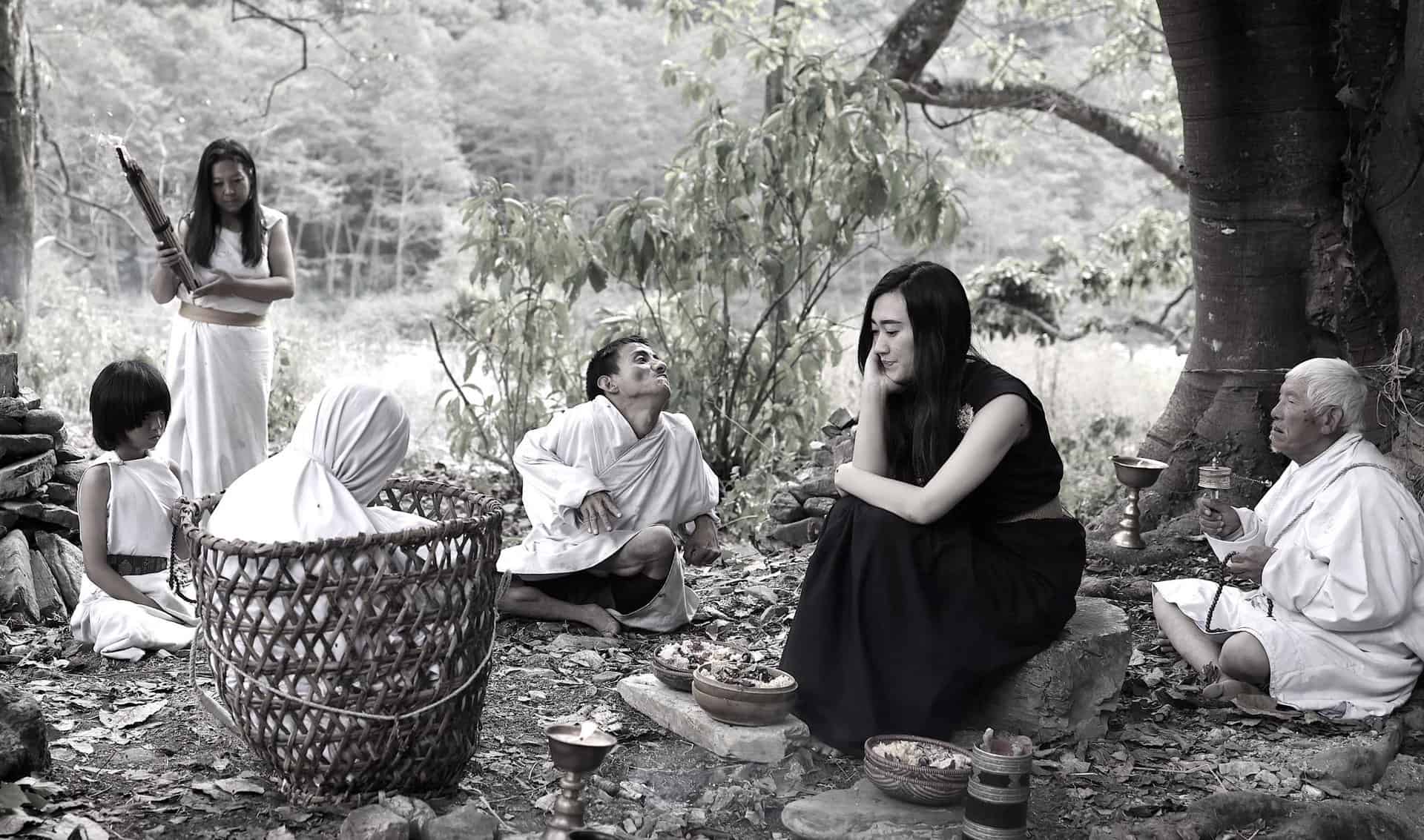
 Movie Reviews1 week ago
Movie Reviews1 week agoShort Film Review: Wooden Toilet (2023) by Zuni Rinpoche
-

 World6 days ago
World6 days agoHaiti Prime Minister Ariel Henry resigns, transitional council takes power
-

 News7 days ago
News7 days agoLarry Webb’s deathbed confession solves 2000 cold case murder of Susan and Natasha Carter, 10, whose remains were found hours after he died
